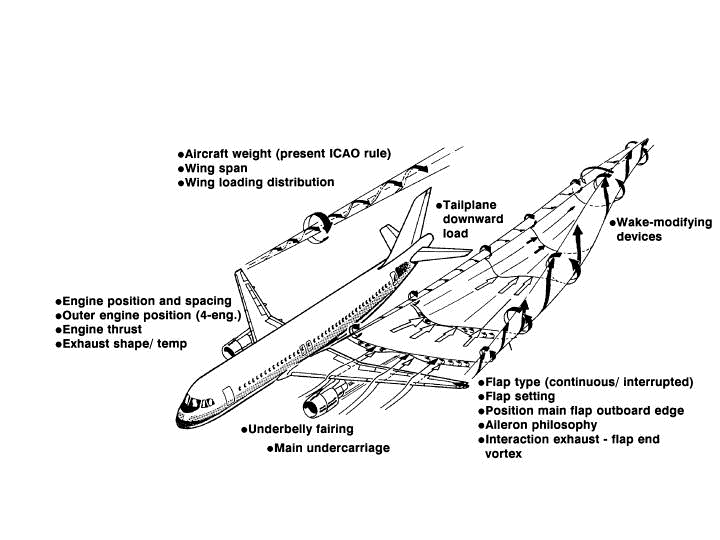Due to the generation of lift on the wings, a pair of counter-rotating air turbulence occurs behind flying aircraft.
A so-called wake vortex shows the respective maxima with regard to the tangential velocity progression starting from the core atypically to solid bodies according to the Lamb-Oseen model already at the edge of the core (and not of the vortex). The vorticity is described by the circulation. The decay of a wake vortex is mainly determined by the surrounding temperature stratification and turbulence of the atmosphere. These wake vortices slowly sink to the ground and dissolve. The so-called ground effect must also be taken into account, which can lead to the formation of so-called secondary structures and a lift up of the wake vortices.
GfL offers an analysis of the possible dangers of wake vortices separately for buildings and persons in the vicinity of an airport. In detail, catchment areas of "sufficiently strong" wake vortices are determined separately according to danger for buildings (replacement of roof tiles by resulting wind suction) and persons (danger of falling / injury due to strong gusts).

